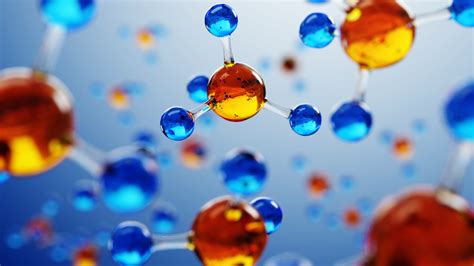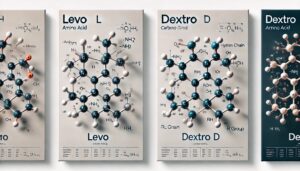PUSHING THE BIOGENETIC ENVELOPE: DESIGNER PROTEINS
by Jeemes Akers
“As laboratories incubate new blends of man and machine … The path of progress cuts through the four-way intersection of the moral, medical, religious and political—and whichever way you turn, you are likely to run over someone’s deeply held beliefs. Venter’s bombshell [the creation of the synthetic life form ‘Synthia’] revived the oldest of ethical debates, over whether scientists were playing God or proving He does not exist because someone re-enacted Genesis in suburban Maryland.”
Nancy Gibbs,
Times magazine
“Genetic technology can’t be un-invented and won’t be stopped. No society will give up on research that in a generation might add 20 years onto our lives, kill the sort of virus we are currently laid low with or fight bacterial resistance to antibiotics, cure cancers, promote crop yields, heal terrible genetic illnesses before even thinking about frivolous things like bringing back a woolly mammoth from extinction for the local zoo.”
Clam Chambers[1]
“As the Amino Age toolkit grows, the natural proteins we now use for help—insulin for people with diabetes, for instance—may come to seem as archaic as the sharpened rocks our Stone Age ancestors once used. By the same token, our current designer proteins, as exciting as they are, are just sundials and wagon wheels. The features of a future landscape filled with bespoke molecules are beyond conception.”
Rowan Jacobson
“Life, New and Improved”
Scientific American[2]
The “Amino Age?”
What exactly is that?
In the past, proteins in our bodies have done—and do—everything for us, but now scientists have learned to create artificial proteins. In the words of one prominent observer, this feat has already yielded a new SARS-COV-2 vaccine (although it is still in the trial stages) and could revolutionize biology.[3] The transformational promise of these developments, are prompting some to suggest we stand at the cusp of an “Amino Age.”
Why am I so interested in the latest protein developments?
The role of malevolent proteins in ravaging the body of a young boy (who—15 years in the future—accidentally contracts a mysterious life-threatening disease), constitutes a central theme in my futuristic Christian fiction trilogy. At the time I began writing (and researching) the protein-related sections of the novels, I had no idea how rapidly, or extensively, breakthrough developments in the field would occur. Advancements have raced far ahead of my futuristic projections. My ideas at the time even preceded the breakthrough CRISPR-Cas9[4] discovery—one of the crowning achievements of the so-called biogenetic revolution—now nearly a decade old.
Compare that to current developments. Today alone (Monday, Aug. 23, 2021) I posted to my file relating to medical-related protein stories, four articles: first, an account of the first genetically engineered marsupials; second, an interesting STAT article about how some individuals are genetically resistant to SARS-COV-2 and its variants; third, a fascinating story of scientists splicing human fat proteins and genes into potatoes to make them larger; and, finally, the Scientific American article cited above about artificial proteins.
All that, mind you, in just one day!
So, what are we talking about? Proteins are among the human body’s most amazing and mysterious structures. Located inside the cells, proteins make up the largest structural and functional portion of cells and tissues. The instructions to make a particular protein is encoded in their DNA. In order for the protein to be made, DNA must first be transcribed into an intermediate molecule called messenger RNA, which is then translated into a protein. Simply put, DNA makes RNA makes protein. Up to ten different proteins can be traced to a single gene
What do proteins do? “Proteins are intricate nanomachines that perform most tasks in living things by constantly interacting with one another. They digest food, fight invaders, repair damage, sense their surroundings, carry signals, exert force, help create thoughts and replicate. They are made of long strings of simpler molecules called amino acids, and they twist and fold into enormously complex 3-D structures. Their origamilike shapes are governed by the order and the number of the different aminos used to build them, which have distinct attractive and repellant forces. The complexity of those interactions is so great and the scale so small (the average cell contains 42 million proteins) that we have never been able to figure out the rules governing how they spontaneously and dependently contort from strings to things. Many experts assumed we never would.”[5]
Simply put, without proteins life as we know it could not exist.[6]
Let me provide one dated example of how vital proteins are in our respective lives. As far back as late August 2018, scientists at Harvard Medical School discovered a protein called TMC1 that converts sound and head motion into bioelectrical signals, thus enabling hearing and balance. The protein TMC1 is located in a difficult-to-access place in the inner ear, where there are a relatively small number of auditory hair cells (some 16,000 compared to over one hundred million sensory cells in the human retina). Proteins on the membranes of these sensory hair cells form miniscule pores that open and shut in response to sound and, in turn, control the influx of electrically charged ions (such as calcium and potassium). In this way, electrical signals are propagated via nerve cells to the brain. It is now clear that the pore-forming TMC1 is the critical gatekeeper in this process. Research published in the journal Neuron at that time demonstrated that individual TMC1 proteins pair up to form pores—thus becoming the critical molecular sensor converting the body’s sound and motion into electrical signals the brain can understand.[7]
Each human body, at the cellular level, is in one sense a battleground and in another, the glorious reflection of God’s most wonderous works. All day long our cells churn out new proteins in the exact order of amino acids dictated by our genetic code, and our bodies’ proteins snap into shape. That shape—in turn—determines the proteins’ respective functions.[8] But because proteins are so small, it is almost impossible to tell what is happening in this nanoworld, even with today’s most powerful electron microscopes. As a result, we still do not know precisely how all these proteins fold correctly, much less what goes wrong when they misfold. As Jacobsen notes in one of his articles: “It can take a year and $120,000 to produce a high resolution image of one protein on specialized equipment. We currently know the structures of just 0.1 percent of them. For the rest, we guess.”[9]
Despite such vast gaps in our knowledge of protein folding and functionality, scientists are charging ahead to imitate natural proteins in the laboratory. So far, they have successfully created artificial proteins that they hope will be an “ultra-vaccine” against SARS-COV-2 (the virus causing COVID-19) and its many variants. All of us have seen blow-ups of SARS-COV-2 molecules with the now-famous “spike” proteins. Each of these spikes, in turn, end in a cluster of amino acids, a section of the protein known as the receptor binding domain [RBD]. These are aligned with, and possess the correct atomic charge, to “dock” with a protein on the surface of the cell. The virus uses this connection to slip inside the cell and replicate.
The latest promising designer proteins use an artificial nanoparticle sphere with RBDs attached to amino acid strings (so a body’s immune system could get a better look and produce antibodies to attack from several different spots).
Of course, scientific advances in the realm of proteins aren’t the only developments in our fast-approaching “Amino Age.” Many other synthetic substances offer promise in fighting today’s pandemic and other diseases. Synthetic peptoids, for example, are a more stable version of antimicrobial peptides (peptides are short sequences of amino acids with side chains bonded to carbon atoms) which also play an essential role in a body’s natural immune system.[10] At the same time, scientists are engineering “good bacteria” to alter the activity of genes gone awry, either by turning them down or activating them, as a means to improve health and combat disease.[11]
And that is only the tip of the iceberg.
From a pure layperson’s perspective, five factors seem to be driving us headlong toward the “Amino Age”: first, exponential growth in medical research and global communication networks to disseminate the results;[12] second, the extraordinary achievements of AI-algorithms at firms such as Google’s DeepMind (which treat the protein folding process as a new, alien language to be deciphered; ), third, the steady growth in sophisticated medical research techniques and equipment; fourth, the pandemic itself, and subsequent success with vaccines, which insure no-litigation deep-pockets (government funds and high-tech titan investments); and, finally, the promise of spillover advances. Such areas include, in part, producing efficient superconductors and batteries, as well as harvesting light (as do photosynthetic proteins in plants) to convert that energy into electricity and fuel.
Many of you who have read my missives over time, know that my brain works in strange ways. As I was thinking about man’s efforts to counterfeit naturally-occurring substances—and all the things that inevitably come off the tracks with such human endeavors—my mind turned from that negative track of thinking to something else entirely.
I was sitting alone in our apartment living room. In the background I was listening to one of my favorite praise songs about the holiness of God. I began to ask God about how protein-like structures function in the spiritual realm; specifically, whether or not the glorified body of Jesus Christ still has proteins, eternally folding and reshaping in perfect configurations.
Suddenly—and certainly unexpectedly—I became aware in a new and different way of the Holy nature of God. In a microsecond, He provided me an infinitesimally small sliver of insight into His infinite creative powers and with it, a sense of the unlimited ways and dimensions in which spiritual proteins could operate without being constrained by this-world physical human weaknesses and limitations.
The experience was so overwhelming (and these English words written shortly afterward fall far short of doing justice to what happened) that I could only bow and spread my arms in reverence. My mouth was wide open, but I could not speak. I could only soak in the experience.
It was over as suddenly as it started.
I shook like a leaf for several minutes afterward.
I know it will never be repeated.
I also know that many of you reading this will have difficulty processing what I have said. As you can imagine, I am a bit reluctant to share the experience. I fully realize the risks involved. Moreover, in my own body the consequences of proteins misfolding have become painfully apparent as I grow older; and so many of you know how I am prone to a wide variety of human weaknesses, habits, and frailties.
“Sigh.”
Why me?
Because I asked.
[1] Clam Chambers, “2 Stocks Pioneering 1 Technology That Will Change the World Forever,” Forbes, Aug 24, 2021. While this missive deals with proteins, Chambers’ article deals with the stock opportunities presented by two post-CRISPR unicorns (EDIT and CRSP).
[2] Rowan Jacobsen, “Life, New and Improved,” Scientific American, Aug. 2021. Jacobsen is a prominent journalist and author of several books with scientific themes; he was a 2017-2018 Knight Science Journalism Fellow at M.I.T.
[3] Ibid.
[4] CRISPR is a “molecular scissors,” with its associated DNA-cleaving enzyme Cas9; the acronym stands for “Clustered Regularly Interspaced Short Palindromic Repeats”), first discovered in bacteria nearly two decades ago. Credit for more recent applications of the process belongs to Jennifer Doudna, a 53-year-old biochemist and cell biologist at Cal Berkeley and more recently the Howard Hughes Medical Institute. Her discoveries in 2012 (along with Emmanuelle Charpentier) are considered one of the most significant in the history of biology. She has won several scientific awards and was runner-up in 2016 for TIME Person of the Year. Competing patent claims for the process resulted in a messy, protracted lawsuit.
[5] Rowan Jacobsen, “Artificial Proteins Never Seen in the Natural World Are Becoming New COVID Vaccines and Medicines, Scientific American, Jul 1, 2021.
[6] Stephen Meyer, one of today’s foremost contemporary scientific voices arguing for a theistic-based intelligent design, points to the large amounts of genetic information carried in protein-based DNA that makes life possible. See, Stephen C. Meyer, The Return of the God Hypothesis: Compelling Scientific Evidence for the Existence of God, Harper Collins, 2021. A friend sent me a link to Peter Robinson’s (Uncommon Knowledge sponsored by the Hoover Institute) fascinating interview with Stephen C. Meyer—a must see for anyone remotely interested in the topic.
[7] For this section on the TMC1 protein, I have relied on Fiona McMillan, “Scientists Have Discovered The Protein That Enables Hearing And Balance,” Forbes, August 24, 2018. TMC1 was actually been discovered in 2002, but no one knew what its role was. Proteins like TMC1 are essentially a chain of amino acids and, in this particular case, 17 amino acids look like they could possibly play a role in the way the protein functioned. One amino acid in particular—an asparagine located at position 447 in the protein—was able to block the influx of calcium ions completely. In other words, this handful of amino acids play a critical role in converting sound waves to nerve signals. TMC1 is one of nearly 150 genes that have been associated with genetically-linked hearing loss (one in 1,000 newborns are affected by hearing loss and half of these have a genetic cause). Multiple studies show that mutations in the TMC1 contribute to hereditary hearing loss in a number of families around the globe.
[8] Jacobsen, “Artificial Proteins.”
[9] Ibid.
[10] See, American Chemical Society, “Possible new antivirals against COVID-19, herpes,” Phys.Org, Aug 24, 2021.
[11] See, among others, Vandana Suresh, “Genetically engineered good bacteria could aid in combating disease,” Phys.Org, Aug 24, 2021.
[12] As one of hundreds of examples, this week I learned of a new atlas that catalogs over 125,000 protein-protein interactions across brain and six other kinds of tissue in mice, more than doubling the number previously known. Niko McCarty, “Protein atlas doubles number of known interactions in mice,” spectrumnews.org, Aug 26, 2021.




